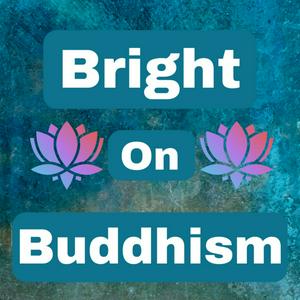Bright on Buddhism - Episode 127 - How do you cite sutras? Why does this matter? How do you read sutra citations?Resources: Cousins, L. S. (1982), Pali oral literature. In Denwood and Piatigorski, eds.: Buddhist Studies, ancient and modern, London: Curzon Press, pp. 1–11Davidson, Ronald M. (2003), Indian Esoteric Buddhism, New York: Indian Esoteric BuddhismColumbia University Press, ISBN 0-231-12618-2De Jong, J.W. (1993), "The Beginnings of Buddhism", The Eastern Buddhist, 26 (2): 25Gethin, Rupert (1998), Foundations of Buddhism, Oxford; New York: Oxford University PressGethin, Rupert (1992), The Buddha's Path to Awakening, Leiden: E. J. BrillGombrich, Richard F (2006), Theravada Buddhism (2nd ed.), London: RoutledgeJones, Lindsay (2005), Councils, Buddhist. In: Encyclopedia of religion, Detroit: Macmillan ReferenceManné, Joy (1990), "Categories of sutta in the Pali Nikayas" (PDF), Journal of the Pali Text Society, XV: 29–88, archived from the original (PDF) on 2014-09-01Nakamura, Hajime (1999), Indian Buddhism: A Survey with Bibliographical Notes, Delhi: Motilal BanarsidassÑāṇamoli, Bhikkhu; Warder, Anthony Kennedy (1982), Introduction to Path of Discrimination, London: Pali Text Society: Distributed by Routledge and Kegan PaulNorman, K.R. (1983), Pali Literature, Wiesbaden: Otto HarrassowitzNorman, K.R. (1996), Collected Papers, volume VI, Bristol: Pali Text SocietyNorman, K.R. (2005). Buddhist Forum Volume V: Philological Approach to Buddhism. Routledge. pp. 75–76. ISBN 978-1-135-75154-8.Pali Canon Online Database, Bodhgaya News, retrieved 2012-10-14Samuel, Geoffrey (2012), Introducing Tibetan Buddhism, New York: RoutledgeSchopen, Gregory (1997), Bones, Stones, and Buddhist Monks, Honolulu: University of Hawai'i PressWynne, Alexander (2003), How old is the Suttapiṭaka? The relative value of textual and epigraphical sources for the study of early Indian Buddhism (PDF), St John's College, archived from the original (PDF) on 2015-03-09Wynne, Alexander (2004). "The Oral Transmission of the Early Buddhist Literature". Journal of the International Association of Buddhist Studies. 27 (1): 97–128.Wynne, Alexander (2007), The origin of Buddhist meditation, New York: Routledgehttps://www.feedingamerica.org/find-your-local-foodbankDo you have a question about Buddhism that you'd like us to discuss? Let us know by emailing us at
[email protected]:Nick Bright: Script, Cover Art, Music, Voice of Hearer, Co-HostProven Paradox: Editing, mixing and mastering, social media, Voice of Hermit, Co-Host


